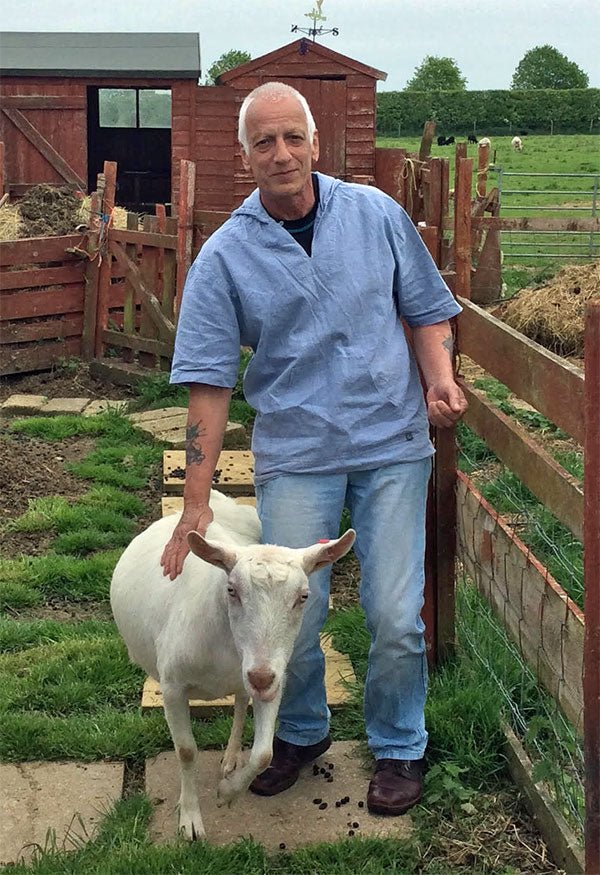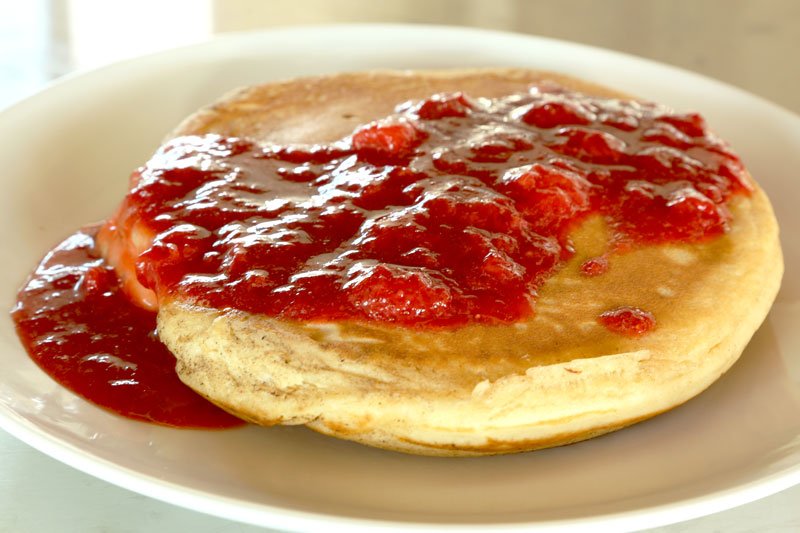
Pedro and Rosie
Remember when you were a child – how you would pretend to make things and you would give them to people who would pretend they were thrilled to be getting them? There’s just something that attracts us to that interaction. We love making people happy.
There is something about Pedro Collins that reminds us of that. His Facebook page (The Little Village Dairy) is full of people in the village asking him when he will be able to give them some cheese and him answering back cheerfully, “It will be ready soon, mate.”

Rosie and Lovely Duck in Pedro’s back yard
That is well and good, but you may be wondering if Pedro is actually licensed to sell his cheese. The answer is wonderfully British: he can sell it to a few local customers with his Hygiene Certificate from the District. He says, “The EHO (Environmental Health Officer) is happy for me to sell my cheese locally as long as I comply to the basic regs and have my cheeses tested every 4 months and/or any new cheeses I make.”
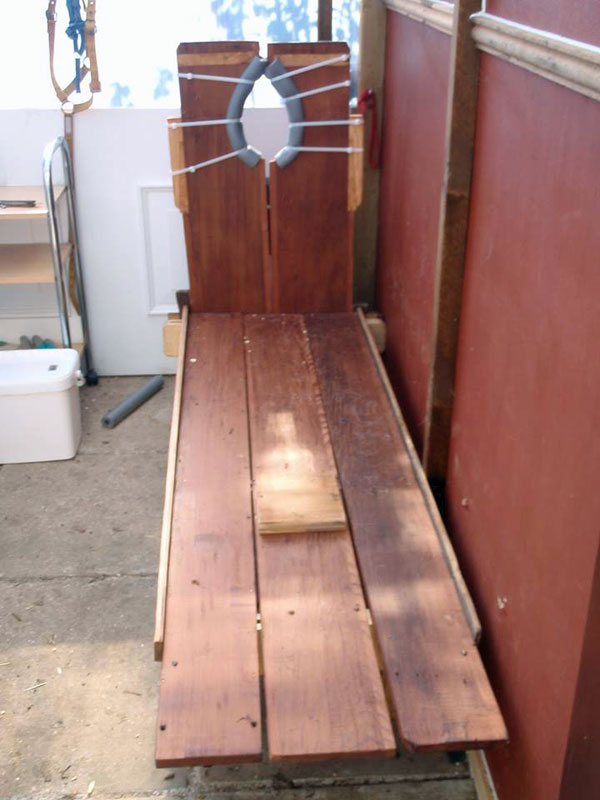
Milking bench
Of course, this is real life and making cheese is just Pedro’s hobby. He has a full time job with the Environment Agency as a Biodiversity Officer, which sounds very official and nowhere near as magical as making cheese for his village.
Interview
How did you end up raising goats and making cheese?
I was definitely influenced by my grandparents, my fathers parents. They had, what I would call a back yard farm. They kept, turkeys, ducks, goats and a pig as well as an allotment (veggie patch). I spent a lot of time helping out with the chores, including milking and making cheese.
I have always kept goats, mainly Saanens but also Pigmy’s. Currently I have Rosie- a 4 year old, milking Saanen and Bumper- a 14 year old pet Pygmy. I also keep a few chickens and a solitary duck called Lovely Duck who is 14 years old and a small flock of sheep, mainly for rearing lambs for meat.

Pedro with Lovely Duck

New lambs

Rosie
I have been making cheese for about a year now, starting with the basic soft cheeses and now I’m making a range of cheeses. Most of my cheese is eaten by the local community, sometimes in exchange for other goodies such as vegetables, a hot meal, wine etc.

With Summer (11), Pedro’s grandaughter at a fair
The basic goat’s cheese I often press and mix with a range of ingredients such as, garlic and herb, apricot and walnut. (I’ll try anything, within reason.)


Feta with olive oil, garlic, basil and red pepper
My latest cheeses are a step up and are receiving good feedback from the local village. One is based on the classic goat’s cheese with a rind the other is a blue. Both are a soft cheese.

Chevre

The chevre on top was coated with beeswax and strawberry leaves

This is a creamy marbled, goat’s milk cheese with a tangy rind. The marbling effect is created by adding salt ash after draining most of the whey from the curd. Pedro sprays a fine mist of a selected mould onto the cheese and after turning daily for around 4 weeks, a rind forms and the cheese is ready to eat.
I make my cheese using traditional methods including hand milking. I make my cheese from fresh goat’s milk, immediately after milking. Some milk I pasteurize, but often I use raw milk.
Next step – a farmhouse cheddar.
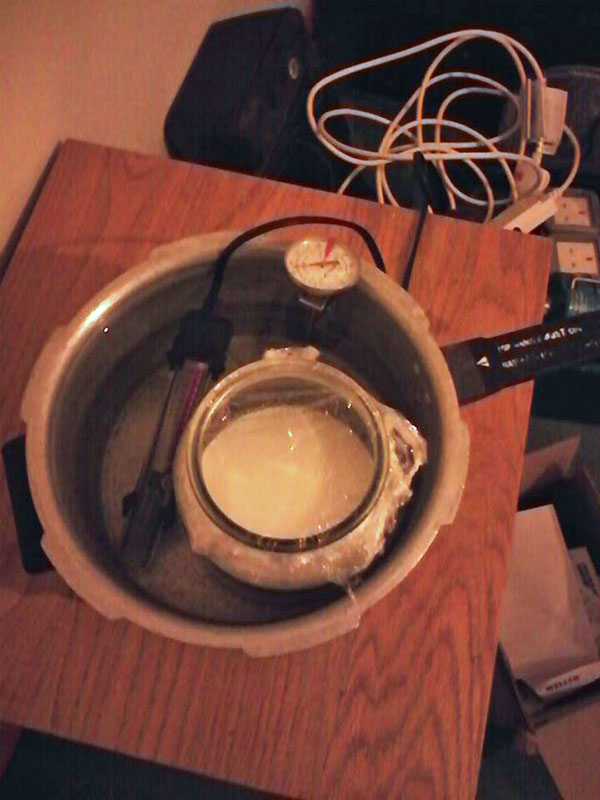
Using a fish tank heater to make a mother culture

Pedro’s separator
Are you raising goats and sheep to make cheese or making cheese because you have goats and sheep?
I’m a home cheese maker, although I have a small shed which I use as a dairy and a milking parlour. Yes I’m trying to cover some of the costs, but it’s more of a passion for me. I sell most of the lamb to family, friends and the local community, although l usually end up giving it to my family.
All my milk comes from Rosie. I hand milk her twice a day at around 7:30. Currently she’s providing me with 4 litres of milk a day, one of our lambs is having the rest!
Progress of Pedro’s dairy:
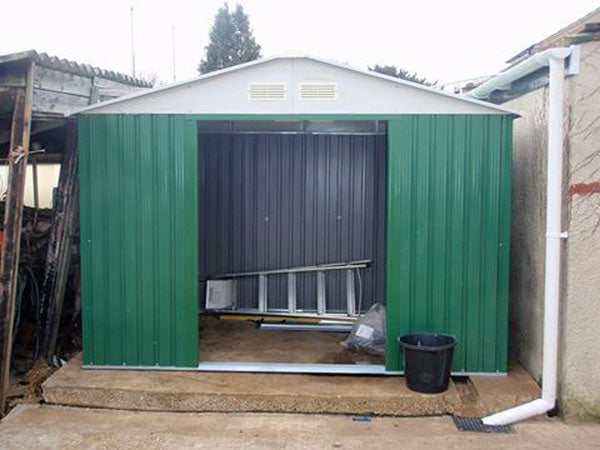

Building a porch to change into booties and a white jacket for cheese making
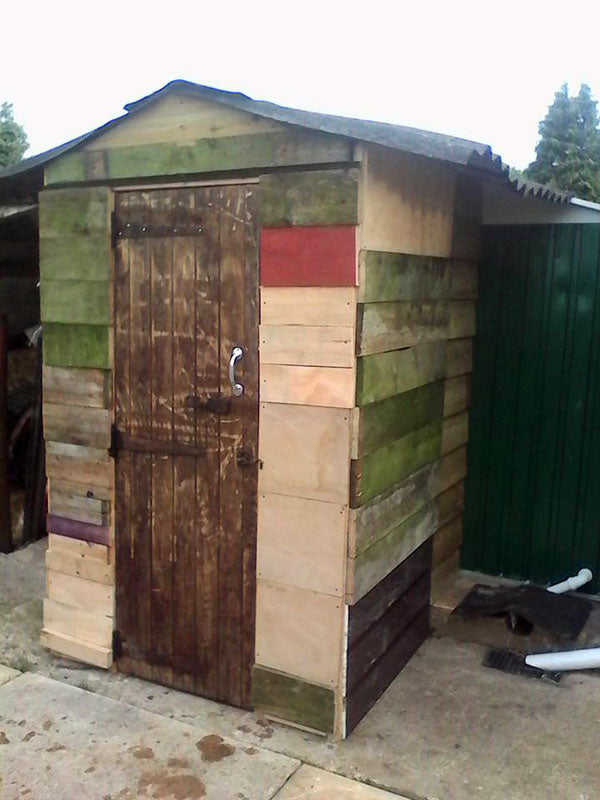
I do intend to upgrade to a small business, when I retire in four years. Hopefully by then I will have mastered the art of cheese making, in its various forms.
What do you use for equipment?
I use traditional methods. I use both pasteurized and unpasteurized milk. I have a small double burner gas hob for this job. After applying cultures and rennet, I then allow the milk to stand for 24 hrs, drain and place in muslin lined colander to drain for 12 hours. I then hang up for a further 12 hours to drain. Once drained, I mix in salt, etc. and press for a short while, up to 8 hrs. (The press is a small standard cheese press, acquired over here in England.)

The soft cheeses can be eaten straight away, but my blue and rind covered cheeses I press and mature for up to 6-7 weeks in my cave.

My cave is a wine chiller, fitted with a mister, controlled by a humidistat, which works extremely well. I can regulate temperatures from 5-10C and humidity 70-95%. (For more about Pedro’s cave, click here.)

I wrap my cheeses in double sided wax paper, with my logo. I call my blue cheese the “Blue Stokei and my white rind covered cheese a White Stokei, our village is called Stoke Lyne.
Just a note on the blue cheese. After about 3 weeks, I use a stainless steel thermometer probe to make holes in the maturing cheeses, to allow penetration of the mould (works a treat).

White Stokei
Progress of Pedro’s labels:

First labels: These were meant for jam jars.

Second labels: Cheeses were originally wrapped in brown, grease-proof paper, but now they are waxed.

These cheese boxes were made from old wine boxes with the sliding lids. Pedro cut them up into 2 or three individual boxes and used them at Christmas, for presents for friends and family.

Newest labels: A friend drew this picture of Rosie. Pedro buys the round boxes from Homestead Farm Supplies in the UK.
Do you have other hobbies?
As I always have plenty of milk and eggs – bread pudding, bread and butter puddings, rice puddings and, yes, the odd cheese cake are being made on a regular basis.

Goat’s milk ice cream: Chestnut, Rhubarb & Raspberry, Banana & Raspberry

Yogurt being made in the Bain Marie
I also have a passion for fungi and organize regular forays in the Autumn, not only to eat but to educate. This has been a lifetime passion for me. I do regular fungal surveys for the Woodland Trust and Local Wildlife Trusts (Facebook page, Pedros Mushroom Patch).
I might even try mushrooms in some my cheese, probably dried specimens. I do make little baked tartlets with goat’s cheese, topped with wild mushrooms and drizzled with olive oil and wild herbs – delicious!


I am also a musician. I have been playing guitar since I was 12 years old and have played with numerous bands, over the years and still play when I get a chance, although with a full time job and looking after the animals, I don’t get a lot of spare time. A note on the music front – I run an annual music festival in our village. It’s on Facebook – Pedstock Music Festival.

For about Pedro, visit his Facebook page- The Little Village Dairy






























